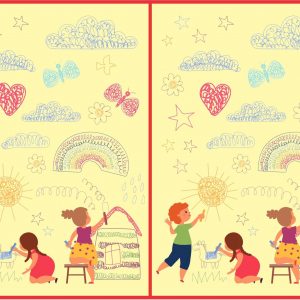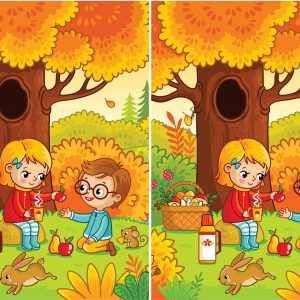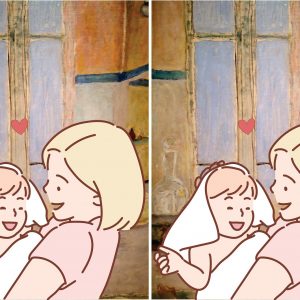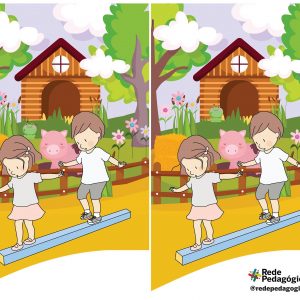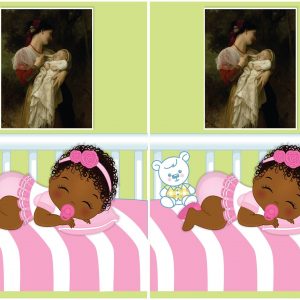Spot the Difference Challenge: A Fun Way to Boost Your Observation Skills
If you’re someone who enjoys a good challenge, then you’re in for a treat! In this article, we’re diving into the world of “Spot the Difference” games. These puzzles are not only fun but also great for improving your attention to detail. In the image we’re exploring today, a young child is peacefully sleeping in their cozy bed, surrounded by soft blankets and a cheerful nightlight. But as always, there are subtle differences between the two images waiting to be discovered. Ready to get started?

The Heartwarming Scene: A Cozy Child’s Bedtime
The first image presents a serene and heartwarming scene. A young child, peacefully sleeping in their bed, is snuggling with their teddy bear. The room around them is calming and full of warmth, from the cozy bed to the soft pastel colors of the blankets. Above the bed, a soft light hangs from the ceiling, casting a gentle glow on the scene. A bee and a butterfly dangle from the light, gently moving in the calm of the night.
This picture encapsulates everything about a peaceful, dreamy bedtime—a moment of pure tranquility. The child’s innocent face and comfortable position give the image a sense of security and calm. The scene is simple, yet beautiful, and it seems almost perfect. But, as is often the case with “spot the difference” games, it’s only perfect at first glance. Let’s take a closer look at the subtle variations that make this game so much fun.

Examining the Differences: A Fun and Challenging Task
While the two images might seem identical at first, the truth is that there are small differences to be found in the details. That’s where the fun begins! The challenge lies in noticing these tiny variations, from changes in the position of the toys to alterations in the objects hanging above the bed. The best part? These changes are often so subtle that they’re easy to overlook, even after multiple looks.
Here’s where you should start:
- The Child’s Position: Is there any subtle change in how the child is lying in the bed? Could their head be positioned differently between the two images?
- The Light Above the Bed: The light fixture and the toys (a bee and a butterfly) hanging from it are key elements in the image. Notice the details in how these are arranged. Is there a change in the way the objects are placed?
- The Blanket: Pay attention to how the blanket rests around the child’s body. Does it look the same in both images? Even the smallest change in the way the blanket is draped can be one of the differences.
- The Flowers in the Background: Behind the child’s bed, there are flowers near the light. Are they identical in both images? A change in the color or placement of the flowers could be a clue.

Why “Spot the Difference” Games Are Great for Your Brain
Engaging in games like “spot the difference” doesn’t just provide entertainment. It helps exercise your brain and can significantly improve your focus and attention to detail. Here’s how:
- Improved Focus: By taking time to scrutinize images and compare them in detail, your mind becomes more focused on the task at hand. The more you practice this, the sharper your focus becomes in other areas of life.
- Memory Enhancement: Spotting differences also strengthens your memory. You’re constantly engaging with visual information and recalling it, which enhances your overall memory retention skills.
- Critical Thinking: It’s not just about noticing changes; it’s about actively looking for them and making connections in your mind. This encourages your brain to think critically and creatively.
- Stress Reduction: Engaging in a fun puzzle like this can also reduce stress and serve as a relaxing break from your routine. It’s a simple way to unwind and recharge.
The Tiny Details That Make All the Difference
What’s fascinating about “spot the difference” games is how the smallest detail can change everything. In this image, we see a seemingly calm scene, yet the difference lies in the most unlikely places. For instance, the light above the bed—so simple in concept—has multiple variations. You may notice the butterfly or bee subtly altered, such as one of them being moved or one of them missing altogether. These changes make the puzzle more engaging because they force you to dig deeper into the image, beyond the obvious.
Focus on the Larger Picture: The Room Around the Bed
While the child and the light are central elements of this image, don’t forget about the room around them. The color scheme, the way the furniture is arranged, and even the shape of the objects near the bed all contribute to the overall ambiance. Could the placement of the furniture or the layout of the room differ between the two images? It’s often these overlooked details that make the puzzle fun and challenging.

Learning Through Observation: Why It Matters
Taking time to focus on small differences not only helps you with these puzzles but also improves your overall attention to detail in daily life. Whether you’re working, studying, or even just engaging in a hobby, being more observant can have profound benefits. A good observer can spot trends, inconsistencies, and even creative solutions to problems that others may miss.
By training your brain to notice these tiny details, you’re building skills that can help you in various aspects of life, from work to personal relationships. It’s about understanding that what seems like an insignificant change could be the key to solving a bigger problem. Practicing with “spot the difference” puzzles helps you develop this mindset.
The Joy of Discovery
The true joy of playing these puzzles is not just in finding the differences but in the satisfaction of discovery. When you spot that final difference, there’s a small rush of accomplishment, and you can’t help but feel a sense of triumph. This makes the game highly rewarding, even when the differences are small and hard to find.
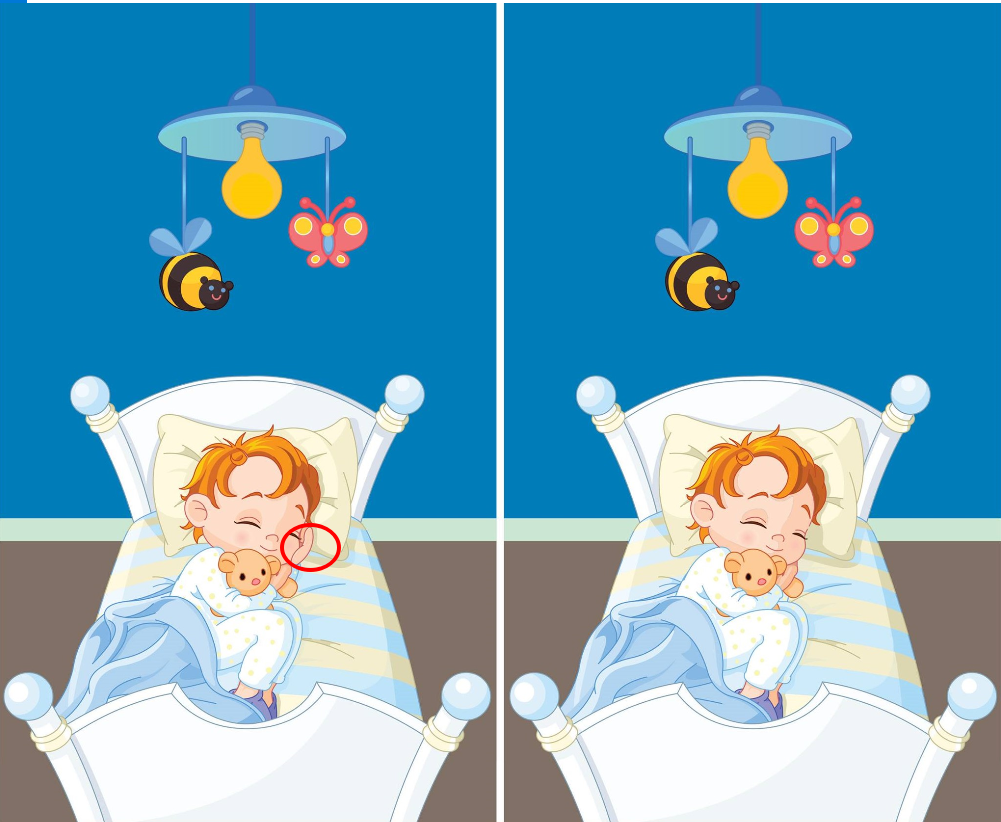
Conclusion: Why You Should Make “Spot the Difference” a Habit
“Spot the difference” games offer more than just entertainment; they are a great way to train your brain to be sharper and more focused. As you work through each puzzle, you’ll be exercising both your memory and attention to detail, skills that will benefit you in many areas of life. Whether it’s noticing a change in the workplace or discovering an overlooked opportunity, these skills are invaluable.
So, the next time you encounter a “spot the difference” puzzle, dive in with confidence. The more you practice, the better you’ll become at spotting those tiny, subtle changes in life—and you just might start seeing the world in a whole new way.
